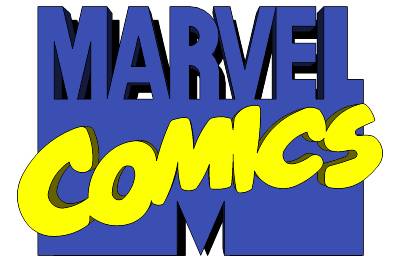In the last piece I detailed that I would examine Marvelution and the changes that would effect Marvel forever. These changes would bring an end to how the company was ran and help bring the company back from the brink. All it needed though was to fail in spectacular fashion first.
In the late 1980's Marvel was sold to a group headed by Ronald Perelman , a very rich man who runs an investment company. The idea Perelman had was that Marvel would become like Disney . With him buying companies and business to accomplish this. There was theme parks and restaurants opened as well as buying trading card companies like Skybox. But what happened was the trading card industry took a hit in the mid 1990's and the theme parks were bleeding money. This forced Perelman to push the real money making aspect of Marvel Comics , the publishing wing ....to do more comics. To handle where the rest of the company wasn't doing so well.
In 1994 the company came up with an idea where they could get even more money from publishing comics. For years comic companies had distributed through distributors to the comic shops and newsstands. The people saw the money they were paying to distribute the product and felt they could easily do that and decided to push ahead with a plan that nearly destroyed the entire industry.
(Heroes World Catalog ..no clue if this is actual Heroes World)
Marvel in late 1994 announced the buyout of Heroes World Distribution. Heroes World had been one of the top 3 distributors of the comics market at that point with Diamond and Capitol City. Yes folks there was 3 companies that distributed comics . Marvel buying Heroes World started a major upheaval in the industry and nearly destroyed the entire market.
This left the other comic company (DC) In a spot and companies as well. Diamond ran by Steve Geppi started in 1982 and would buy out smaller distributors along the way. Then came 1994 and Geppi quickly moved and outbid Capitol City to distribute with DC and others. A story is Geppi also offered DC a deal if he went to sell , he would sell Diamond to them. Capitol City managed to limp along with smaller companies to distribute but within a year sold out to Diamond.
Marvel meanwhile faced major anger from everyone it seemed . Frank Miller during a speech at a convention gave a heated description of how Marvel Comics was trying to destroy the industry. Others questioned the wisdom of the company believing they could step in and distribute the books after really no experience at all with that part of the industry.
They were right to worry. Marvel had no clue how to handle distribution ...in no time Marvel would **** up essentially their own in house distribution system. Lawsuits and more happened and by 1997 Marvel realized Heroes World was an utter disaster they had caused. Geppi seemingly was the last smart distributor left standing as Capitol sold to him and Marvel came back to Diamond.
This caused a lot of bad things to happen. Many retailers went out of business and it sank 2 companies that was a key part of the industry. In Capitol Cities case they had ran for close to 20 years.
Marvelution !
Also in 1994 , Marvel announced that the company was departing from a single EIC concept citing that the company was too big for just one person to oversee. This would be true if Marvel was putting out 125 books a month as they had been doing. But in 1995 the company would cancel 75 titles and pair down to 50. Now those 50 titles would have 5 Editors over seeing each line.
The people in charge would be Mark Gruenwald (Avengers & Cosmic line) , Bob Budiansky (Spider-Man) , Bob Harras (X-Men) , Bobbie Chase (Marvel Edge) and Carl Potts (Epic and General Entertainment)
The idea was this would make things work easier and stream line the company essentially. There would be no problems creatively . Well like Heroes World , Marvelution was an epic failure. Problems set in quick as having characters appear in other titles across the line. Within a year by the end of 1995 , Marvel would fold the 5 Editors concept and the company would go back to one single Editor in Chief of the line.
Finally after the failures of Perelman's run and the 5 Editors in Chief concept , the company was millions in debt. The end of the Marvel we knew then crashed in 1996. This era had came to a bitter end.
Results 1 to 1 of 1
-
07-13-2014, 10:04 AM #1
 Marvel Comics 1990's - "The Good , the Bad and the Ugly" Pt. #4
"The story so far: As usual, Ginger and I are engaged in our quest to find out what the hell is going on and save humanity from my nemesis, some bastard who is presumably responsible." - Sir Digby Chicken Caesar.
Marvel Comics 1990's - "The Good , the Bad and the Ugly" Pt. #4
"The story so far: As usual, Ginger and I are engaged in our quest to find out what the hell is going on and save humanity from my nemesis, some bastard who is presumably responsible." - Sir Digby Chicken Caesar.
“ Well hell just froze over. Because CM Punk is back in the WWE.” - Jcogginsa.
“You can take the boy outta the mom’s basement, but you can’t take the mom’s basement outta the boy!” - LA Knight.
"Revel in What You Are." Bray Wyatt.







 Reply With Quote
Reply With Quote